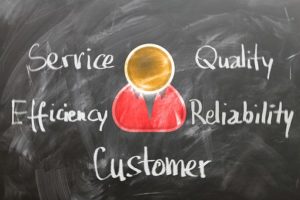Along with personal New Year’s Resolutions, there are also business ones. We often spend time each year reflecting on our numbers and then come up with strategies to improve them. For some, improving numbers means increasing sales or efficiency. For others, it means reducing accidents (and insurance claims) or inventory waste.
These needed changes are often discussed over boardroom tables, and other times are given as directives from upper management. Unfortunately, just like personal resolutions, business goals can start strong and then lose ground, sometimes ending up in a position worse than where they started. This is when consultants are often called in.
The Problem with Consultants
Consultants, with a wide variety of specialties, are often called in to help management fix a specific problem they are having. This is like hiring a personal trainer when your goal is to increase your fitness levels. The consultant or trainer takes some background information and starting metrics and then prescribes an action plan.
You then implement that plan, along with accountability from the consultant. While the accountability is in place and you continue to implement the plan, goals materialize. Everyone celebrates! However, too often, once the accountability is gone, there is a sliding back, or even a maladaptive behavior, and this creates a bigger problem than what you started with.
When someone from outside the business comes in, they bring with them the benefit of a fresh perspective, but, if they only give a solution, without really understanding the problem, they will create a bigger fish to fry.
Learning to Fish
Lean consultants often carry the title of Sensei. They do this because unlike consultants, who show up, solve a problem and leave, they look for the root cause of the problem to begin with. A lean sensei doesn’t simply offer a quick fix, but rather seeks knowledge. They don’t look for the “fish” that will solve a problem, temporarily changing results, and celebrating prematurely. Instead, they learn about the lake that is the business at hand, the fish that occupy that lake, and the best bait to use.
When a lean sensei works with a business, they seek to understand how holes got into the systems and lead management into processes that help them discover and solve those on their own. This way teaches managers concepts they can use going forward, rather than giving them a single solution. Instead of a fish, a lean sensei teaches the business how to fish.
PBEX, LLC provides a complete review and analysis of the business processes that create efficiency and profitability, and the barriers to them. Providing consulting and lean process improvement training, we are ready to support your organizational goals. Contact us today to learn more about lean business management and to schedule your review with a lean sensei.










